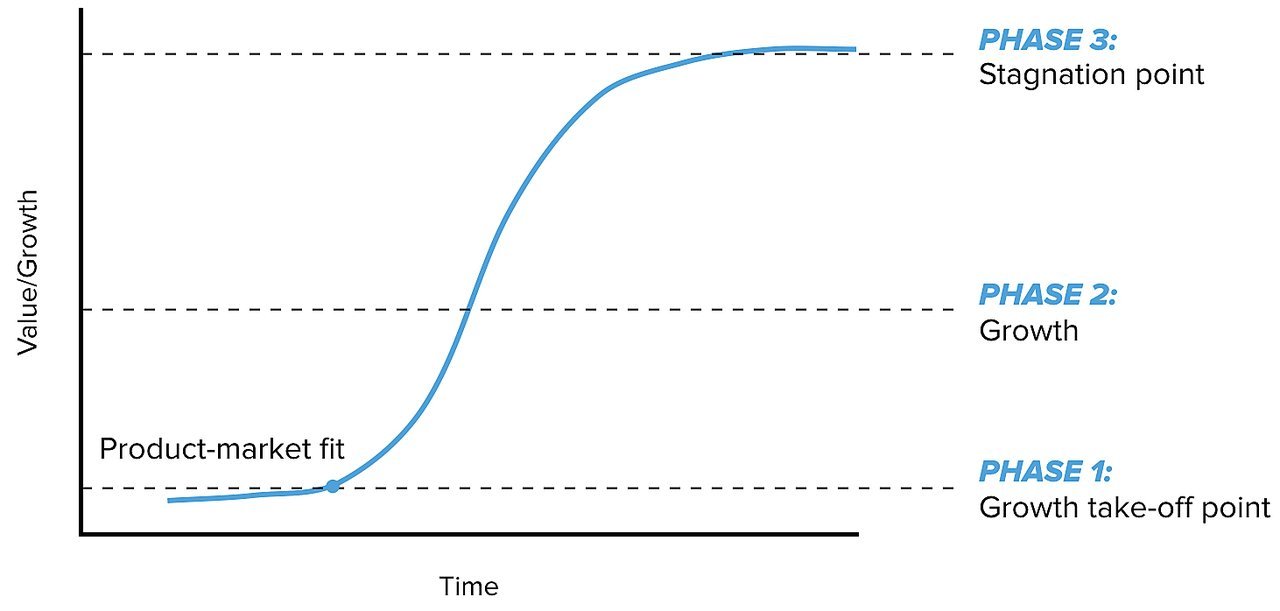Welcome to the realm of eCommerce where artistry meets business savvy! In the bustling online marketplace, the success of any business hinges on its ability to captivate and convert visitors into loyal customers. It is no secret that an exceptional website acts as the front door to your entrepreneurial aspirations, beckoning potential buyers with its enchanting design and seamless functionality. But not just any website will do; we are talking about the crème de la crème – a world-class eCommerce website that stands head and shoulders above the rest. In this article, we will unravel the mystery behind designing a website of such unparalleled excellence, unveiling the best practices that will set you on the path to triumph. So grab your digital paintbrush and prepare to unleash your creativity as we embark on this thrilling journey to design greatness!
Table of Contents
- Crafting a Seamless User Experience: Intuitive Navigation and Clear Product Organization
- Optimizing Website Performance: Speed, Responsiveness, and Scalability
- Aesthetics that Convert: Striking Visual Design and Compelling Product Imagery
- Driving Conversions with Effective Call-to-Action Elements
- Q&A
- Future Outlook

Crafting a Seamless User Experience: Intuitive Navigation and Clear Product Organization
Crafting a seamless user experience on an eCommerce website is a crucial aspect of designing a world-class platform. One of the key elements to achieve this is intuitive navigation. By providing users with clear and easy-to-use navigation menus, you can ensure that they can find what they’re looking for quickly and effortlessly.
To create intuitive navigation, consider the following best practices:
– Keep your main navigation menu simple and minimal, including only the most essential categories. Avoid overwhelming users with too many options.
– Use clear and concise labels for each menu item, avoiding jargon or ambiguous terminology. For example, instead of using the label “Apparel,” opt for “Men’s Clothing” and “Women’s Clothing” to eliminate confusion.
– Include a search bar prominently in your design to cater to users who prefer searching for specific products. Ensure that the search function provides accurate results and suggestions as users type.
– Implement a breadcrumb trail throughout your website, allowing users to easily navigate back to previous pages. This feature is especially useful for users who enter your website through a search engine or a specific product page.
Optimizing Website Performance: Speed, Responsiveness, and Scalability
When it comes to designing a world-class eCommerce website, optimizing its performance is crucial for success. A well-optimized website not only ensures that your visitors have a seamless and enjoyable experience, but it also boosts your search engine rankings and increases conversions. In this post section, we will dive into three key aspects of website performance: speed, responsiveness, and scalability.
1. SPEED: In today’s fast-paced digital world, speed is of the essence. A slow-loading website can lead to frustrated users who are likely to abandon their shopping carts and look for alternatives. To enhance your website’s speed, consider implementing the following best practices:
– Minimize HTTP requests by combining and minifying CSS and JavaScript files.
– Leverage browser caching to store frequently used elements locally.
– Optimize and compress images to reduce their file size without compromising quality.
– Use a content delivery network (CDN) to deliver website content from servers located closer to the user’s location, reducing latency.
2. RESPONSIVENESS: With the increasing use of mobile devices for online shopping, ensuring that your website is responsive across different screen sizes is paramount. Here are some tips to enhance the responsiveness of your eCommerce website:
– Implement a mobile-first design approach, prioritizing the mobile user experience.
– Use responsive images that automatically adjust their size and resolution based on the device.
– Implement a fluid grid system that allows content to adapt and reflow to different screen sizes.
– Conduct thorough testing across various devices and screen resolutions to ensure a consistent user experience.
3. SCALABILITY: As your eCommerce business grows, your website should be able to handle increasing traffic and transactions without sacrificing performance. Here are some strategies for optimizing scalability:
– Utilize a cloud-based hosting solution that offers scalable resources based on demand.
– Implement caching mechanisms to reduce server load and improve response times.
– Opt for a flexible and scalable eCommerce platform that can handle high volumes of concurrent users.
– Regularly monitor and optimize database performance to ensure efficient handling of transactions.
By prioritizing speed, responsiveness, and scalability, you can optimize the performance of your eCommerce website and provide an excellent user experience to your visitors. These best practices will not only attract and retain customers but also contribute to your website’s overall success in the competitive online marketplace.
Aesthetics that Convert: Striking Visual Design and Compelling Product Imagery
In the fast-paced world of eCommerce, aesthetics play a vital role in the success of any online business. Your website’s visual design and product imagery can make or break a customer’s decision to make a purchase. To help you create a world-class eCommerce website, we’ll explore the best practices for incorporating striking visual design and compelling product imagery.
1. Consistency is key: Ensure that your website design aligns with your brand identity and messaging. Maintain a cohesive color scheme, typography, and layout throughout your website to create a memorable and professional appearance. For example, check out the website of luxury fashion brand Chanel – the black and white color scheme, elegant fonts, and consistent use of high-quality imagery reflect the brand’s sophisticated image.
2. High-quality imagery: Invest in professional product photography or utilize stock photos that accurately showcase your products. Crisp, high-resolution images with multiple angles and zoom options can help customers better visualize the product and its features. Take inspiration from Amazon, whose product images are known for their clarity, detail, and various views to assist customers in making informed purchasing decisions.
3. Utilize emotional appeal: Tap into the power of emotions through your visual design and product imagery. Use images that evoke positive emotions, such as joy, excitement, or desire, to connect with your target audience on a deeper level. For instance, Apple’s website often showcases lifestyle imagery that portrays their products as stylish, sophisticated, and empowering, appealing to customers’ aspirations and emotions.
4. Optimize for mobile: With the increasing prevalence of mobile shopping, it’s crucial to ensure that your visual design and product imagery are responsive and display seamlessly across different devices. A mobile-friendly website with properly sized images and intuitive navigation can enhance the user experience and drive conversions. Take a cue from Nike’s mobile website, which provides a visually appealing and user-friendly interface, allowing customers to effortlessly browse and buy their products on any device.
Remember, by harnessing the power of striking visual design and compelling product imagery, you can captivate your audience, boost engagement, and ultimately drive conversions on your world-class eCommerce website. Stay tuned for more best practices to create a truly exceptional online shopping experience.
Driving Conversions with Effective Call-to-Action Elements
When it comes to designing a world-class eCommerce website, one of the key factors that can make a significant impact on your success is the effective use of call-to-action (CTA) elements. These elements are strategically placed buttons, banners, or links that guide your visitors in taking a specific action, such as making a purchase, signing up for a newsletter, or sharing your product on social media. By implementing the right CTAs, you can drive conversions and ultimately boost your online sales.
To achieve this, here are some best practices to keep in mind when designing your eCommerce website:
1. Clear and Compelling Messaging: Your CTAs should use concise and persuasive language that clearly communicates the value of the action you want your visitors to take. For example, instead of a generic “Buy Now” button, try something more specific like “Get Your Perfect Fit Today” for a clothing store.
2. Strategic Placement: CTAs should be prominently displayed on your website, typically above the fold or in high-traffic areas. They should stand out visually through the use of contrasting colors, bold fonts, or eye-catching graphics. Placing them at the end of persuasive product descriptions or within customer testimonials can also be effective.
3. Multiple CTAs: Don’t limit yourself to just one CTA per page. Offering multiple CTAs that cater to different visitor segments or stages of the buying journey can help maximize conversions. For instance, you can have a “Sign Up for Exclusive Updates” CTA for new visitors, while displaying a “Limited Time Offer: Shop Now” CTA for returning customers.
By carefully implementing these call-to-action design best practices, you can enhance the user experience, drive conversions, and create a seamless shopping journey for your customers. Remember, designing an effective website is an ongoing process, so don’t hesitate to test different CTAs and analyze the results to continually improve your conversion rates.
Q&A
Q: What are some essential elements of a world-class eCommerce website design?
A: A world-class eCommerce website design should incorporate clear and intuitive navigation, visually appealing layout, seamless user experience, mobile responsiveness, quick loading times, secure payment gateways, and effective product categorization.
Q: How can good typography enhance the overall design of an eCommerce website?
A: Typography plays a crucial role in creating a captivating visual experience for users. Carefully selecting fonts that align with the brand identity can help evoke the right emotions and enhance readability. Consistency in font usage, appropriate sizing, and proper spacing can make all the difference in conveying professionalism and trustworthiness, resulting in a world-class eCommerce website design.
Q: How important is mobile responsiveness for an eCommerce website and why?
A: Mobile responsiveness is paramount for a world-class eCommerce website design. With the increasing number of users accessing the internet via mobile devices, ensuring seamless functionality and an optimized layout on various screen sizes becomes crucial. By offering a seamless mobile experience, businesses can tap into a larger pool of potential customers and boost conversion rates.
Q: What role does user experience (UX) play in designing a world-class eCommerce website?
A: User experience is the foundation of a world-class eCommerce website. Designing with the user in mind can greatly enhance customer satisfaction and drive sales. A seamless and intuitive UX includes clear navigation, easily accessible search functionality, visually appealing product images, concise product descriptions, personalized recommendations, and a hassle-free checkout process. Providing a delightful user experience will keep customers engaged, encourage repeat visits, and ultimately lead to higher sales and customer loyalty.
Q: How can an eCommerce website stand out visually from competitors?
A: To stand out visually from competitors, an eCommerce website can employ unique and visually stunning elements that align with the brand identity. Utilizing high-quality imagery, engaging videos, and interactive features can captivate users and create a memorable experience. Balancing aesthetics with ease of use is key to designing a visually striking eCommerce website that sets itself apart and leaves a lasting impression.
Q: What security measures should an eCommerce website implement to ensure customer trust?
A: Building customer trust is crucial for a world-class eCommerce website. Implementing industry-standard security measures, such as SSL certificates, secure payment gateways, and data encryption, is essential to protect customers’ personal and financial information. Displaying trust badges, offering transparent refund or return policies, and providing secure login options can significantly enhance customers’ confidence in the website’s legitimacy and encourage them to make purchases.
Q: How does effective product categorization contribute to a seamless shopping experience?
A: Effective product categorization streamlines the shopping experience by allowing customers to easily find what they are looking for. Organizing products into logical categories and subcategories, accompanied by intuitive filtering options, helps customers narrow down their search and find desired products quickly. An efficient product categorization system saves time, reduces frustration, and enhances the overall user experience, making it a crucial aspect of a world-class eCommerce website design.
Q: What are some best practices for website loading times to ensure a smooth user experience?
A: Quick loading times are vital to maintain user engagement and prevent potential customers from abandoning the website. Compressing images, utilizing caching techniques, optimizing code, and minimizing external scripts are some best practices for improving website loading speed. Additionally, leveraging content delivery networks (CDNs) can help distribute website content across multiple servers globally, further improving loading times for users across different regions.
Q: How can social proof be harnessed to boost eCommerce website credibility?
A: Social proof, such as customer reviews, ratings, testimonials, and social media mentions, can greatly enhance an eCommerce website’s credibility. Displaying positive customer feedback and showcasing influential endorsements can help instill confidence in potential buyers. Incorporating social sharing buttons can also encourage customers to share their positive experiences, further amplifying the website’s reputation and credibility.
Q: What role does call-to-action (CTA) placement play in driving conversions?
A: Call-to-action placement is critical in guiding users towards desired actions and driving conversions. Well-positioned and visually captivating CTAs, such as “Add to Cart,” “Buy Now,” or “Sign up,” can encourage users to take the next step in the purchasing process. Strategic placement of CTAs, along with compelling copy and eye-catching design elements, can significantly increase the likelihood of conversion and contribute to the success of a world-class eCommerce website.
Future Outlook
In a world where digital commerce reigns supreme, the potential for a truly exceptional eCommerce website is boundless. By unraveling the best practices for designing a world-class online platform, we have embarked on a journey that transcends the ordinary. It is time to bid our farewells, but not before leaving you with a taste of the extraordinary.
With unwavering determination, we have explored the intricate artistry behind building an eCommerce website that surpasses all expectations. From the initial brushstrokes of intuitive navigation to the symphony of captivating visuals, every element has been thoughtfully designed to inspire and engage.
We delved into the mind of the modern-day consumer, understanding their desires and needs, and channeled them into crafting an experience unlike any other. Seamless functionality and effortless user-friendliness intertwine to create a digital realm where users effortlessly find what they seek, as if the website anticipated their every desire.
But it is not just aesthetics and ease that propel a website into the realm of greatness; behind the scenes lies a tapestry of technical brilliance. The invisible threads of robust security measures, impeccable loading speeds, and scalable infrastructure all contribute to the foundation of an eCommerce website that can weather any storm.
We have explored the delicate balance between simplicity and innovation, understanding that too much of either can disrupt the delicate harmony that underpins an extraordinary online shopping experience. Empowered by the knowledge of best practices, web designers have the tools to create a masterpiece that enthralls, educates, and entices every visitor.
As our journey comes to an end, we invite you to take these best practices and mold them into your own creative tapestry. With each brushstroke, may your eCommerce website become a reflection of your unique vision and a testament to the heights that can be achieved through design excellence.
Remember, the world of eCommerce is an ever-evolving canvas, awaiting the touch of innovative minds. With bold steps and a commitment to crafting a world-class online platform, the possibilities are endless.
So, go forth and dare to dream. Embrace the challenge of designing a world-class eCommerce website and let your imagination soar. With our unveiling of best practices as your guiding light, there are no limits to what you can create.
Now, it is your turn to wield the brush and leave your mark on the vast digital landscape of eCommerce.

